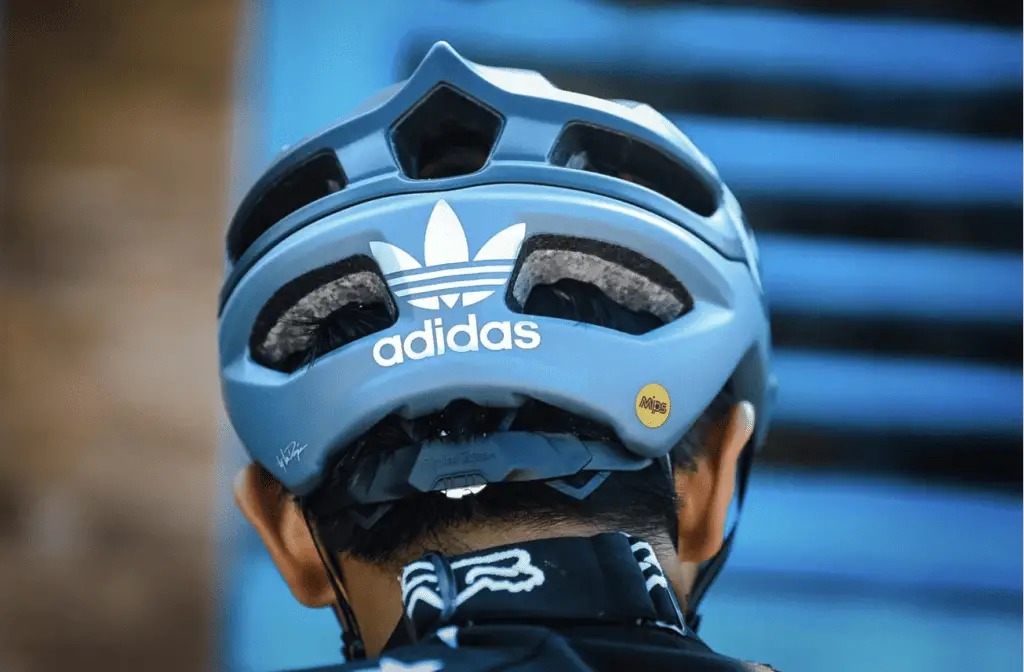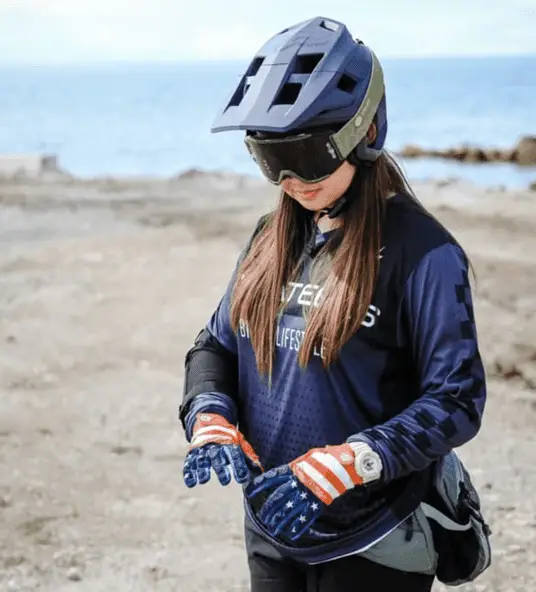Last Updated on December 13, 2021
Mountain biking comes with many risks because you are just riding on two wheels on rough trails most of the time.
Many unexpected things can happen to you, which is why you need to be careful all the time. But also don’t be too cautious where you compromise your enjoyment and riding experience just to avoid crashes or falls.
How do you do that? Well, by wearing the right mountain bike helmet.
But how can you choose the right one knowing that there are many options out there?
This article aims to answer that question by helping you know the things you should consider when buying a mountain bike helmet.
What are the different types of mountain bike helmets?
Cross-country
Cross-country is the lightest and safest mountain biking discipline because this is more about endurance, distance, and uphills.
Thus, you need to wear a light half-shell helmet that is as light and as low profile as possible. The helmet doesn’t need to have a visor because you are less likely to crash and hurt your head.
These helmets are the lightest kind and don’t provide much protection in exchange for better breathability and aerodynamics.
Trail or enduro
Trail helmets are half-shell helmets that have better protection and coverage compared to cross-country helmets. They have an adjustable visor and a backshell covering.
However, enduro helmets are more robust than a trail helmet. Enduro helmets can also be half-shell or full-face helmets that do well on uphills and downhills. These maintain a balance between breathability and protection.
Downhill
Downhill helmets are similar to motocross or dirt bike helmets, but are lighter and have a slimmer shape. Nonetheless, they are the heaviest type of mountain biking helmet because of their full-face design. They provide maximum coverage on the head as well as on the chin.
Full-face vs Half-shell Helmet
There are two main types of mountain bike helmets. These are the half-shell helmets and full-face helmets.
Half-shell helmets are mainly used for cross-country and trail biking. Meanwhile, full-face helmets are geared towards enduro and downhill riders. There are also two kinds of full-face helmets. The lighter ones are for enduro.
They usually have a detachable chin so you can take them off if you’re climbing uphills. Meanwhile, downhill helmets don’t provide good breathability because they are heavier but provide higher levels of protection.
Best Mountain Bike Helmets
Troy Lee Designs Adidas Limited Edition
The Troy Lee Designs Adidas Limited Edition is the best trail mountain biking helmet there is because of its lightweight design and superior protection.
It is also very stylish, making you look cool when riding. It features a breakaway visor and the innovative impact protection system MIPS that covers the inner shell and turns on its own if you crash.

This absorbs the impact when you crash so your helmet moves and not your head. It also has an adjustable X-Static strap and a Pure Silver liner that’s made for improved security.
Fox Dropframe
- Our maximum coverage trail helmet featuring ear protection and open face ventilation
- MIPS’ added protection system has been proven to reduce the rotational motion when implemented in a helmet by absorbing and redirecting energies and forces otherwise transmitted to the brain
- 8 Big Bore vents and 7 exhaust vents keep you cool and aid in moisture management^The securely fixed visor is positioned to channel airflow into the Big Bore vents
Prices pulled from the Amazon Product Advertising API on:
Product prices and availability are accurate as of the date/time indicated and are subject to change. Any price and availability information displayed on [relevant Amazon Site(s), as applicable] at the time of purchase will apply to the purchase of this product.
Fox Dropframe is the go-to helmet of enduro riders because of its half-shell design that covers the majority of your head’s sides including your ears’ surroundings.
Although this might be a half-shell, it still features the protection needed for downhill riding, except of course that it doesn’t have a chin guard.
It features eight Big Bore vents and seven exhausts to ensure breathability and to keep you cool. This also has the MIPS impact protection system that absorbs vibrations during impact. It’s a must-have if you want to ride more aggressively without compromising ventilation and weight.
Smith Trace
- Lightweight Aerocore in-mold construction
- Complete ventilated protection featuring Koroyd
- Integrated skeletal structure
- VaporFit adjustable fit system
- 18 optimized ve
Prices pulled from the Amazon Product Advertising API on:
Product prices and availability are accurate as of the date/time indicated and are subject to change. Any price and availability information displayed on [relevant Amazon Site(s), as applicable] at the time of purchase will apply to the purchase of this product.
Smith Trace is the best cross-country helmet you can find in the market. It is manufactured by Smith, a globally renowned mountain bike helmet manufacturers that produces the finest and highest quality safety gears for mountain bikers.
It is made by a lightweight mold construction and a MIPS system that is available in multiple colors.
This has a Vaporfit adjustable system to ensure that you have a good fit on your helmet. There are even 20 vents to ensure the utmost breathability. Plus, an ultra-light single-layer webbing on its outer shell adds additional support for safety, making it also good for trail riding.
Troy Lee Designs D4
- Impact Foam: EPS
- Audio Compatible: no
- Fit Adjustment: n
Prices pulled from the Amazon Product Advertising API on:
Product prices and availability are accurate as of the date/time indicated and are subject to change. Any price and availability information displayed on [relevant Amazon Site(s), as applicable] at the time of purchase will apply to the purchase of this product.
The Troy Lee Designs D4 is a must-have if you are into downhill biking. It is a downhill helmet that is made for racing as it provides maximum protection that protects your brain, head, face, and chin against crashes.
What’s great about this is that aside from being an attractive mountain bike helmet, it does all of these without compromising too much ventilation and breathability. It’s made from a lightweight fiberglass shell that reduces weight. This is then complemented with 3D cheek pads that secure your helmet tightly and comfortably on your face.
This also has a Full Spectrum adjustable visit that provides multiple wearing configurations that protects your sight from the sun and branches that might be on your way.
You will find 20 intake valve exhausts, a chin strap, and a TLD drawstring helmet sock for storage and safety, which is already becoming more common on most mountain bike helmets.
Related:
Things to Consider When Choosing a Mountain Bike Helmet
Riding discipline
Know your riding discipline. Are you fond of uphills and keeping track of lost calories and covered distance?
If so, then cross-country is for you. Get a lightweight cross-country helmet if that’s the case. If you want something fun, then you can try out enduro and downhill and get yourself a proper half-shell or full-face helmet.
Features
Know the features by learning how many exhaust valves are there as well as the material it is made of. It’s best if you choose one which has MIPS to ensure utmost protection. MIPS moves the shell of mountain biking helmets instead of your head so you don’t take the impact force.
Conclusion
Mountain biking comes with its risks and dangers. But you can avoid these by wearing the right gear. In this case, a mountain bike helmet.

Know your riding discipline and choose the respective helmet that fits your riding style. Know the features, consider the design, and invest good money on the best mountain bike helmet because your head and brain are worth protecting the most.




